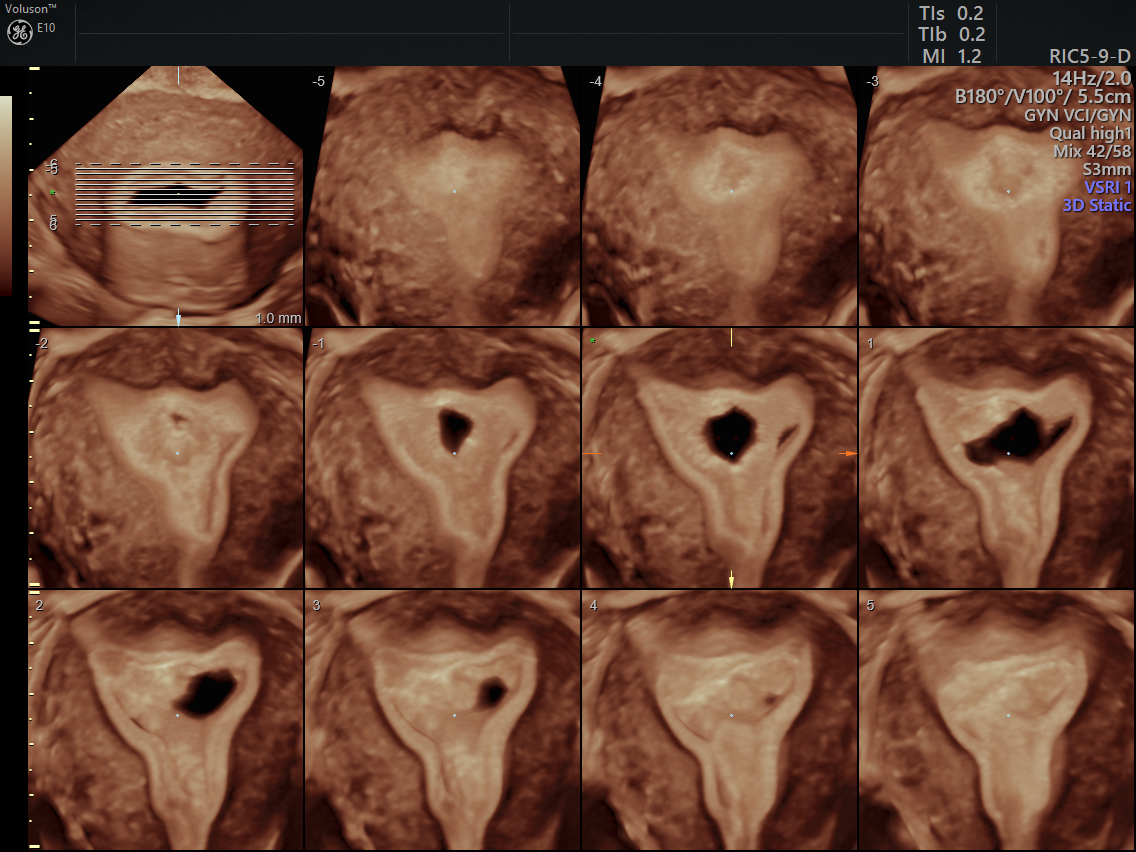When a woman visits the gynecologist with pelvic pain or abnormal uterine bleeding, the first diagnostic option is usually an ultrasound or magnetic resonance imaging (MRI). Choosing between the two can make a big difference in patient experience and satisfaction.
Recent research published in Academic Radiology found that many women prefer transvaginal ultrasound (TVUS) over MRI for pelvic pain and abnormal uterine bleeding, but there are distinct differences in these preferences. A closer look at the study can inform interactions with patients and help you determine how to discuss their options.
Transvaginal Ultrasound vs. MRI
The study surveyed 50 menopausal women with pelvic symptoms about their experience with MRI and transvaginal ultrasound. Women included in the study had no history of gynecologic cancer or hysterectomy.
Patients were surveyed based on the Uterine Fibroid Symptoms Quality of Life Index, Testing Morbidities Index and Wait Trade Off for ultrasound and MRI examinations. Following the Testing Morbidities Index, patients said they preferred transvaginal ultrasound over MRI and indicated that they were willing to wait close to four weeks to avoid an MRI, compared with nearly three weeks to avoid ultrasound.
Women said they were more embarrassed to have the transvaginal ultrasound but experienced more fear and anxiety before and during an MRI. These negative effects continued after the MRI as well. However, these preferences didn't hold true for all women: Women who were physically inactive preferred MRI, whereas women with more severe symptoms, loss of control of health or sexual dysfunction preferred transvaginal ultrasound. The survey didn't delve into why women may prefer one test over another or where that anxiety comes from.
Helping Your Patient Choose the Best Imaging Test
3D transvaginal ultrasound results are comparable to MRI, according to an expert opinion published in the American Journal of Obstetrics and Gynecology. In many cases, the choice between the two exams comes down to patient preference.

Transvaginal Ultrasound Images with Tomographic Ultrasound Imaging (TUI)
Understanding where your patients are coming from and what is tolerable to them allows you to help them choose between ultrasound vs. MRI and provide the best patient experience, improving patient care. The authors of the Academic Radiology study noted that taking into account patient preference means identifying factors that affect patient experience. By accounting for these factors and choosing the appropriate test, you may even be able to increase its diagnostic value.
For many women, ultrasound is a familiar, comfortable and cost-effective exam. It may be the best first recommendation for any patient concerned about the bill. Take a moment to talk to your patient about their preferences, including fears and anxieties about certain tests. Consider the environment and testing process during the exam to lessen any discomfort or awkwardness for the patient.
Patients want to be treated as partners in their care. By talking to your patients about their preferences and ensuring that they understand what happens during the exam as well as what you're able to learn from it, you can increase trust and improve their experience. With that trust and buy-in from the start, you can smoothly transition to talking about diagnosis and next steps.



